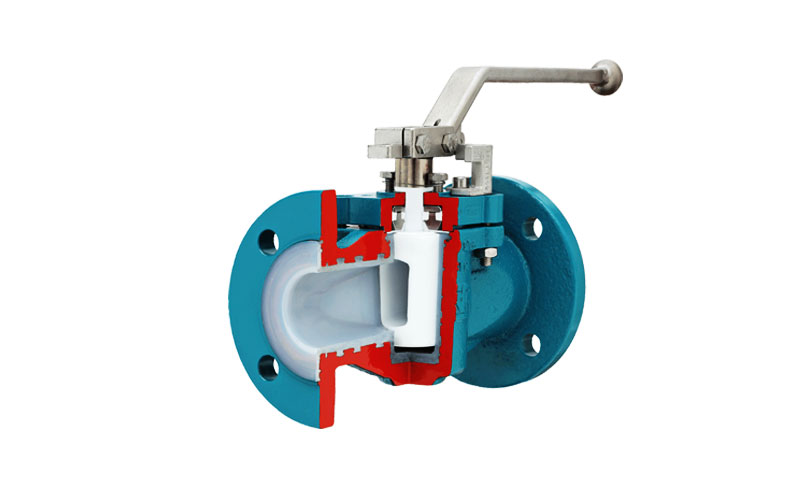1. Pengenalan
Palam injap adalah injap giliran suku yang serba boleh digunakan secara meluas untuk pengasingan, pengalihan, dan sekali -sekala dalam sistem perindustrian.
Reka bentuknya yang mudah - palam silinder atau kerucut berputar di dalam badan injap - Operasi Cepat, Penurunan tekanan rendah, dan kebolehpercayaan yang mantap.
Memahami prinsipnya, bahan, metrik prestasi, dan aplikasi perindustrian adalah penting untuk memilih injap yang tepat untuk tekanan tinggi, kasar, atau perkhidmatan yang terkawal ruang.
2. Apa itu injap palam?
A Palam injap adalah injap putar giliran suku tahunan yang digunakan secara meluas dalam sistem paip perindustrian untuk pengasingan aliran, pengalihan, dan sekali -sekala.
Prinsip operasi teras bergantung pada a palam silinder atau kerucut ditempatkan di dalam badan injap, yang berputar sama ada menyelaraskan pelabuhan dalamannya dengan saluran paip untuk aliran tanpa had atau menyekat laluan sepenuhnya.
Mekanisme yang sederhana namun mantap ini membolehkan operasi 90 ° pesat, Menawarkan kecekapan dan kebolehpercayaan dalam aplikasi kritikal.
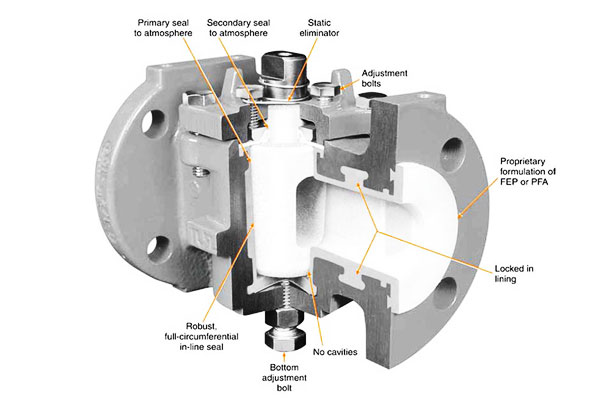
Ciri -ciri teras
- Operasi suku tahunan
Tindakan pantas (biasanya 90 °) - Sesuai untuk pengasingan kecemasan, Tugas dan Permohonan Diverter Di mana Tindakan On/Off Rapid diperlukan. - Mudah, Laluan aliran pengalihan rendah
Konfigurasi port penuh menyediakan aliran paip yang hampir dengan penurunan tekanan yang minimum; Kapasiti aliran perdagangan pilihan-port yang dikurangkan untuk tork dan kos yang lebih rendah. - Konfigurasi pelabuhan berganda
Dua-, tiga- dan pengaturan palam empat hala membenarkan lencongan, Mencampurkan, routing persampelan dan kompleks tanpa injap berganda. - Keledaan pengedap
Terdapat dengan logam-ke-logam Tempat duduk untuk perkhidmatan suhu tinggi/kasar, berdaya tahan (PTFE/RPTFE, elastomer) Tempat duduk untuk shutoff gelembung dan tork rendah, atau dilincirkan sistem yang memanjangkan kehidupan kerusi dalam media yang kotor atau erosif.
3. Klasifikasi injap palam dengan reka bentuk
Injap palam dikategorikan berdasarkan Reka bentuk mekanikal, Kaedah pengedap, dan konfigurasi aliran.
Memahami klasifikasi ini membantu jurutera memilih injap yang tepat untuk tekanan, suhu, aliran, dan keperluan perkhidmatan.
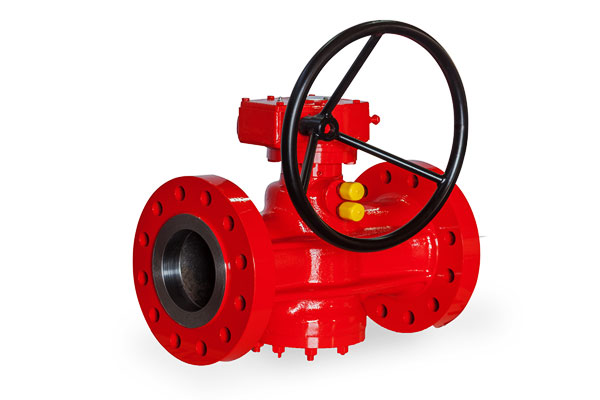
Berdasarkan jenis palam
| Jenis | Penerangan | Kelebihan | Aplikasi biasa |
| Injap palam silinder | Palam silinder lurus berputar di dalam rongga badan yang sepadan; Reka bentuk yang paling mudah. | Padat, kos efektif, Penurunan tekanan rendah. | Air, gas, garis kimia tekanan rendah. |
| Conical (Tirus) Palam injap | Palam kerucut masuk ke dalam badan untuk pengedap yang lebih ketat. | Pengedap yang sangat baik; mengendalikan tekanan dan suhu yang lebih tinggi. | Petrokimia, minyak & gas, garisan wap. |
Berdasarkan konfigurasi port
| Jenis port | Penerangan | Kelebihan | Aplikasi biasa |
| Melalui pelabuhan (Pelabuhan penuh) | Pelabuhan sepadan diameter saluran paip; Laluan aliran lurus melalui. | Penurunan tekanan minimum; Kapasiti aliran tinggi. | Pengangkutan cecair pukal, saluran paip, pengendalian buburan. |
| Pelabuhan yang dikurangkan | Port lebih kecil daripada paip paip. | Tork operasi yang lebih rendah; kos yang cekap. | Sistem aliran sederhana, garis instrumen. |
| Pelbagai pelabuhan (Tiga- atau empat arah) | Membolehkan pengalihan aliran, Mencampurkan, atau mengambil sampel melalui pelbagai pelabuhan. | Menggantikan pelbagai injap; Routing Fleksibel. | Pensampelan, Tugas penyelewengan, Reaktor kimia. |
Berdasarkan sokongan palam
| Jenis Sokongan | Penerangan | Kelebihan | Batasan |
| Palam terapung | Palam terletak di antara tempat duduk dan berputar dengan bebas. | Menjajarkan diri; pembinaan mudah. | Tork yang lebih tinggi pada saiz yang besar; Penggunaan tekanan tinggi terhad. |
| Palam yang dipasang Trunnion | Palamkan berlabuh dengan galas atas dan/atau bawah. | Mengurangkan tork operasi; stabil dalam aplikasi tekanan tinggi atau bersaiz besar. | Reka bentuk yang lebih kompleks; Kos pembuatan yang lebih tinggi. |
Berdasarkan reka bentuk pengedap
Kehidupan tempat duduk yang dilanjutkan; operasi lancar dalam cecair kotor atau erosif.
Penyelenggaraan berkala; tidak sesuai untuk aplikasi kebersihan.
Tempat duduk Lymer memberikan pengedap yang ketat.
| Jenis pengedap | Penerangan | Kelebihan | Batasan |
| Logam-ke-logam | Kerusi Keras Kenalan Terus Terus. | Suhu tinggi, tekanan tinggi, perkhidmatan kasar. | Memerlukan tork yang lebih tinggi; berpotensi untuk melambai tanpa pelinciran. |
| Kerusi yang berdaya tahan (Ptfe, Rptfe)
</TD> |
Elastomer atau po | Tork rendah; Bubble-tight shutoff; rintangan kimia. | Julat suhu terhad; Degradasi yang berpotensi dengan media yang agresif. |
| Lubr |
4. Komponen utama dan bahan injap palam
Prestasi injap palam, ketahanan, dan kesesuaian untuk aplikasi tertentu bergantung pada komponen dan bahan.
Setiap bahagian direka untuk menahan tekanan, suhu, kakisan, dan hakisan sambil memastikan operasi lancar dan pengedap ketat.
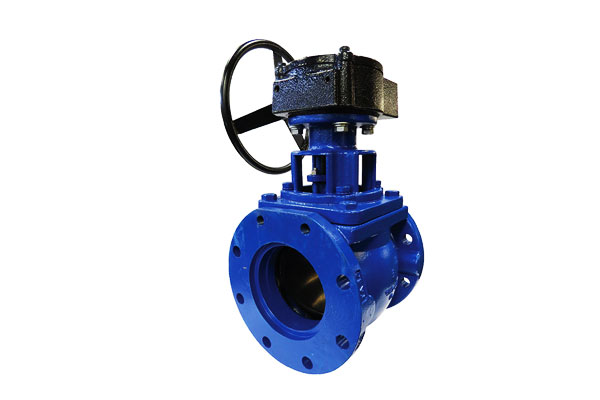
Komponen utama
| Komponen | Penerangan | Fungsi |
| Badan injap | Perumahan luaran yang mengandungi palam dan pelabuhan. | Menyokong beban tekanan, Menyediakan jalan aliran, dan menghubungkan ke saluran paip. |
| Palam | Elemen berputar silinder atau kerucut dengan satu atau lebih port. | Mengawal mengalir dengan menyelaraskan atau menyekat pelabuhan(s); elemen kawalan aliran utama. |
| Tempat duduk | Permukaan logam atau berdaya tahan terhadap meterai plag. | Memastikan gelembung ketat gelembung dan mengekalkan integriti pengedap jangka panjang. |
| Batang / Mengendalikan | Aci atau tuil yang digunakan untuk memutar palam. | Pindah Tork dari Penggerak Manual atau Automatik ke Plug. |
| Ruang pelincir (pilihan) | Takungan antara palam dan badan yang dipenuhi dengan pelincir (untuk injap palam pelincir). | Mengurangkan geseran, memanjangkan kehidupan kerusi, dan menghalang gempa atau kakisan. |
| Galas / Trunnions (Untuk palam yang dipasang di Trunnion) | Menyokong di atas dan/atau bahagian bawah palam. | Mengurangkan tork operasi dan menstabilkan palam dalam injap besar atau tekanan tinggi. |
| Kelenjar / Pembungkusan | Elemen pengedap di sekeliling batang atau mengendalikan antara muka. | Menghalang kebocoran di sepanjang batang/pemegang; membolehkan putaran lancar. |
Pemilihan bahan
| Komponen | Bahan tipikal | Sifat utama |
| Badan & Bonnet | Keluli karbon (A216 WCB), Keluli tahan karat (304, 316), Dupleks, Aloi 20, Aloi nikel | Kekuatan, Rintangan kakisan, toleransi suhu |
| Palam | Sama seperti badan atau hardfaced (Stellite, WC Overlay) | Pakai rintangan, kestabilan dimensi, keserasian kimia |
| Tempat duduk | Logam (Stellite, Monel), PTFE/RPTFE, Uhmwpe | Pengedap ketat, rintangan kimia, geseran rendah |
| Batang / Mengendalikan | Keluli tahan karat, Keluli aloi | Kekuatan, ketegaran kilasan, Rintangan kakisan |
| Pelincir | Minyak mineral, gris sintetik, atau pelincir yang diluluskan oleh FDA | Mengurangkan geseran dan melindungi terhadap kakisan dalam injap pelincir |
5. Ciri aliran dan tingkah laku hidraulik

Keupayaan aliran (Cv) - julat biasa
- Injap palam bersaiz kecil (¼ - 1) mungkin ada CV ~ 0.1-5.
- Saiz proses biasa (2-6) biasanya julat CV ~ 5-200 Bergantung pada reka bentuk port (port penuh vs. pelabuhan yang dikurangkan).
- Injap palam diameter besar (8+) dapat mencapai nilai CV yang sangat tinggi, sebanding dengan injap bola dan sering melebihi injap dunia untuk saiz yang sama.
Penurunan tekanan dan pendikit
- Injap palam direka khas untuk hidup/mati atau penyelam perkhidmatan.
Walaupun mereka boleh digunakan untuk pendikit, mereka kurang ideal daripada injap globe untuk modulasi yang tepat kerana ciri -ciri aliran tak linear yang berpotensi dan memakai tempat duduk apabila diletakkan di bawah Δp tinggi. - Penurunan tekanan meningkat dengan aliran dan berkurangan dengan saiz port; Perkhidmatan ΔP tinggi memerlukan trim khas (palam pelbagai peringkat atau mengurangkan tekanan) untuk mengelakkan bunyi dan hakisan.
6. Metrik dan kelas prestasi
| Metrik | Kebimbangan biasa / julat |
| Kelas tekanan | ANSI 150-2500 biasa; lebih tinggi dengan reka bentuk palsu |
| Julat suhu | Cryogenic (dengan bahan yang sesuai) Sehingga ≈400-600 ° C dalam aloi biasa; aloi khusus memanjangkan jarak |
| Kebocoran | Tempat duduk logam: kebocoran rendah tetapi tidak ketat gelembung dalam semua kes; Kerusi yang berdaya tahan: gelembung-ketat (Kebocoran sifar praktikal) |
| Kehidupan kitaran | Tempat duduk logam yang dilincirkan: Kehidupan Panjang dalam Perkhidmatan Bersih; Kerusi yang berdaya tahan: beribu -ribu ribu kitaran |
| Pelepasan buruan | Mitigasi dengan Bellows, Pembungkusan yang dimuatkan secara langsung, dan meterai batang yang patuh |
| Piawaian & ujian | Ujian tekanan shell/tempat duduk, Ujian kebocoran tempat duduk, NDT di bahagian kritikal (Radiografi, MPI) |
7. Proses pembuatan injap palam
Pembuatan injap palam melibatkan tepat Casting, pemesinan, perhimpunan, dan ujian untuk memastikan ketahanan, Pengedap kebocoran, dan operasi yang boleh dipercayai di bawah pelbagai keadaan perindustrian.

Melemparkan atau menjalin badan dan palam
Injap badan dan palam membentuk teras struktur injap palam. Mereka boleh dihasilkan melalui:
- Pemutus pasir: Biasa untuk medium- kepada injap bersaiz besar. Memberi fleksibiliti dalam geometri kompleks, termasuk badan pelbagai pelabuhan, dan membolehkan ciri tertanam seperti sokongan trunnion.
Rawatan haba pasca-casting mengurangkan tekanan sisa. - Pelaburan Pelaburan (Hilang-Alat): Menawarkan ketepatan dimensi yang luar biasa dan permukaan yang lancar, Sesuai untuk ketepatan atau injap yang lebih kecil dengan toleransi yang ketat.
- Menunaikan: Menghasilkan padat, Komponen kekuatan tinggi untuk aplikasi tekanan tinggi atau kritikal. Injap palsu mempunyai lompang yang lebih sedikit dan rintangan keletihan yang unggul, Sesuai untuk piawaian saluran paip API 6D.
Pemesinan ketepatan
Setelah melemparkan atau menempa, komponen menjalani CNC dan pemesinan manual untuk mencapai toleransi yang tepat dan kemasan permukaan licin:
- Palam membosankan dan mengisar: Memastikan palamnya berputar dengan bebas sambil mengekalkan meterai yang ketat terhadap tempat duduk.
- Pemesinan kerusi: Tempat duduk logam atau berdaya tahan dipesar dengan toleransi peringkat mikron untuk memastikan gelembung gelembung ketat.
- Penjajaran pelabuhan: Kritikal untuk injap pelbagai port untuk menjamin laluan aliran yang betul dan meminimumkan penurunan tekanan.
- Penamat permukaan: Lapping, menggilap, atau mengasah mengurangkan geseran, Menghalang Galling, dan meningkatkan kebolehpercayaan pengedap jangka panjang.
Hardfacing dan Coatings
Untuk meningkatkan ketahanan dalam kasar, erosif, atau media yang menghakis, Palam dan tempat duduk mungkin:
- Hardfaced dengan Stellite, Tungsten Carbide, atau aloi berasaskan nikel, Meningkatkan rintangan haus dan jangka hayat yang memanjangkan.
- Disalut dengan lapisan tahan kakisan seperti PTFE, penyaduran nikel, atau epoksi.
- Dilincirkan dalam injap khusus untuk mengekalkan operasi tork yang rendah, mencegah gempa, dan memanjangkan hayat meterai, terutamanya dalam aplikasi buburan tekanan tinggi.
Perhimpunan dan kesesuaian
Perhimpunan adalah operasi ketepatan yang memastikan penjajaran, lancar, dan integriti pengedap:
- Penyisipan pasang: Diletakkan dengan teliti di dalam badan; dilincirkan jika diperlukan.
- Pemasangan batang dan trunnion: Galas dan sokongan trunnion dipasang untuk mengurangkan tork operasi dan menstabilkan palam besar di bawah tekanan tinggi.
- Pembungkusan dan pelarasan kelenjar: Menghalang kebocoran di sepanjang batang sambil memastikan putaran lancar.
- Pengesahan meterai dan tempat duduk: Tempat duduk logam atau berdaya tahan diperiksa untuk pemampatan yang betul, penjajaran, dan hubungan permukaan.
Ujian dan kawalan kualiti
Setiap injap palam menjalani ujian yang ketat untuk memenuhi API, ISO, dan piawaian ASTM:
- Ujian tekanan hidrostatik dan pneumatik: Mengesahkan integriti badan dan tempat duduk di bawah tekanan kerja yang diberi nilai dan tekanan maksimum yang dibenarkan.
- Ujian kebocoran tempat duduk: Sahkan penutupan gelembung-ketat mengikut ISO 5208 atau API 598.
- Pengesahan dimensi: Mesin Pengukuran Koordinat CNC (Cmm) Pastikan pematuhan spesifikasi reka bentuk.
- Pengukuran tork operasi: Memastikan putaran yang lancar tanpa daya berlebihan, Kritikal untuk injap automatik atau jauh.
- Ujian tidak merosakkan (Ndt): Teknik seperti pewarna penembusan, zarah magnet, atau ujian ultrasonik mengesan retak mikro, keliangan, atau melepaskan kecacatan.
8. Kelebihan dan batasan
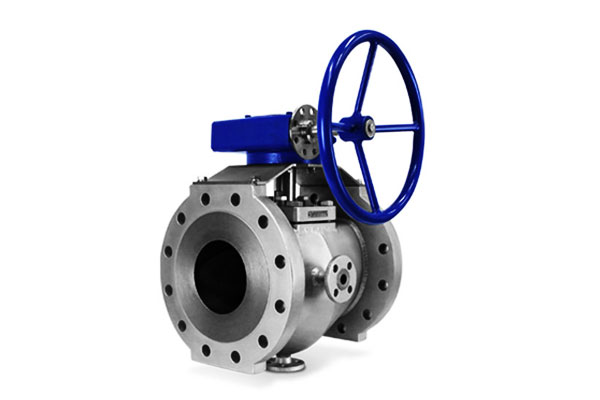
Kelebihan utama injap palam
- Rintangan cecair kasar: Palam eksentrik dengan tempat duduk karbida tungsten terakhir 300% lebih lama daripada injap bola dalam buburan perlombongan (Jurnal Kejuruteraan Perlombongan).
- Penurunan tekanan rendah: Injap palam terbuka sepenuhnya mengurangkan penggunaan tenaga pam sebanyak 10-15% vs. Injap Globe (Data Bintang Tenaga EPA).
- Operasi Cepat: Reka bentuk suku tahunan (0.5-2 untuk injap automatik) - Kritikal untuk penutupan kecemasan (Mis., Blowouts Well Oil).
- Fleksibiliti: Mengendalikan cecair, gas, dan buburan di -196 ° C hingga 815 ° C -Satu jenis injap untuk pelbagai aliran proses.
- Prestasi ketat: Injap duduk lembut mencapai kebocoran Kelas VI (≤0.00001%) - Menghalang kehilangan cecair mahal/toksik.
Batasan injap palam
- Keperluan tork yang tinggi: Injap yang tidak dilanda logam dan logam memerlukan tork 2-3x lebih daripada injap bola-injap yang lebih besar memerlukan penggerak pneumatik/hidraulik yang mahal.
- Keperluan penyelenggaraan: Injap yang dilincirkan memerlukan suntikan gris suku tahunan - Penyelenggaraan yang tidak dijawab Menyebabkan Plug Binding (Downtime 4-8 jam setiap kejadian).
- Had suhu tinggi: Tempat duduk lembut (Ptfe) Merendahkan di atas 260 ° C-terhad kepada perkhidmatan suhu rendah (Mis., pemprosesan makanan).
- Kos: Injap palam eksentrik dan berprestasi tinggi berharga 20-50% lebih daripada injap bola-hanya dibenarkan untuk keadaan yang keras.
- Buburan dengan pepejal besar: Palam pelbagai dan silinder menyumbat dengan pepejal >5 MM - Memerlukan penapis atau reka bentuk eksentrik.
9. Permohonan injap palam
Plug injap cemerlang dalam persekitaran perindustrian yang keras di mana injap lain gagal.
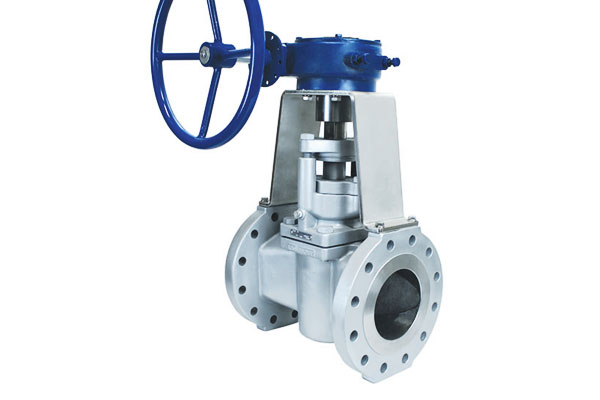
Di bawah adalah sektor utama dan kes penggunaan:
Minyak & Gas
- Hulu (Wellheads): API 6A Injap Palam Pelincir (1000 bar, 350° C.) mengawal minyak mentah dan gas masam - pematuhan NACE MR0175 menentang Hak Hake.
- Midstream (Saluran paip): Injap palam eksentrik (API 6D) bertindak sebagai injap blok untuk gas asli (kadar aliran sehingga 10,000 m³/h) - Penurunan tekanan rendah mengurangkan penggunaan tenaga pemampat.
- Hiliran (Penapisan): Injap palam yang diletakkan logam mengendalikan minyak dan asfalt berat (400° C.) - Palam karbida tungsten menahan lelasan zarah kokas.
Rawatan air dan air sisa
- Pengendalian enapcemar: Injap palam eksentrik (Tempat duduk lembut, Kelas VI) mengendalikan enapcemar dengan pepejal 20-30% - tidak tersumbat, 60% kurang masa downtime daripada injap bola.
- Dos kimia: Injap palam yang tidak dilanda (Kerusi PTFE) Kawalan dos klorin/fluorida - kebocoran kelas VI menghalang pencemaran air.
- Penyahgaraman: 316L Palam injap mengendalikan air masin (538° C.) - rintangan kakisan memastikan 10+ hayat perkhidmatan tahun.
Kimia dan Farmaseutikal
- Pemprosesan asid: Hastelloy C276 Plug Valves mengendalikan 98% Asid sulfurik (650° C.) - Kakisan sifar, bertemu ISO 15848-1 Kelas AH.
- Farmaseutikal: Injap palam yang dipenuhi PTFE (Asme BPE) Mengawal dos API-Kebocoran Kelas VI dan keupayaan CIP Mencegah pencemaran silang.
Penjanaan kuasa
- Tumbuhan termal: Injap palam yang diletakkan logam mengawal stim superheated (540° C., 200 bar) - Digunakan dalam sistem pintasan turbin.
- Tumbuhan nuklear: 316L Palam injap dengan belos logam pembungkusan pemegang penyejuk borat - kebocoran sifar (Kelas VI) menghalang pelepasan radiasi.
Perlombongan dan mineral
- Pengangkutan buburan: Injap palam eksentrik (Kerusi karbida tungsten) mengendalikan tailing perlombongan (30% pepejal) - 300% Kehidupan lebih lama daripada injap bola yang dipenuhi getah.
- Proses pengapungan: Injap palam yang diletakkan getah mengawal bahan kimia pengapungan bahan kimia-kos rendah dan penyelenggaraan mudah untuk tapak terpencil.
10. Perbandingan dengan injap lain
Injap Palam adalah salah satu daripada beberapa jenis injap yang digunakan dalam kawalan bendalir perindustrian.
Memahami kekuatan dan batasan relatif mereka membantu jurutera memilih injap yang paling sesuai untuk aplikasi tertentu.
Jadual di bawah membandingkan Palam injap dengan injap lain yang biasa digunakan:
| Jenis injap | Reka bentuk & Operasi | Kelebihan utama | Batasan | Aplikasi biasa |
| Palam injap | Berputar silinder atau palam kerucut dengan port; operasi suku tahunan | Mudah, padat, Bubble-tight shutoff; Penurunan tekanan rendah; serba boleh untuk aliran pelbagai port | Tork operasi manual boleh tinggi untuk saiz yang besar; Pelinciran sering diperlukan; pendikit terhad | Buburan, minyak & gas, garis proses kimia, mengalihkan aliran, pensampelan |
| Injap bola | Bola sfera dengan melahirkan; Quarter-turn | Operasi cepat; Pengedap gelembung-ketat; Baik untuk tekanan tinggi/suhu; tork rendah | Konfigurasi pelbagai pelabuhan terhad; Tidak sesuai untuk media erosif | Air, Talian paip gas, garis kimia, aplikasi hidup/mati |
| Injap pintu | Pintu gelangsar di antara tempat duduk; gerakan linear | Penurunan tekanan minimum apabila dibuka sepenuhnya; bi-arah; Sesuai untuk diameter besar | Operasi perlahan; pendikit miskin; besar; getaran atau perbualan yang berpotensi | Wap, air, saluran paip minyak; tugas pengasingan |
Injap Globe |
Palam/tempat duduk atau gerakan linear cakera/cakera; Reka bentuk pendikit | Peraturan aliran yang sangat baik; kawalan yang tepat; Pengedap teguh | Penurunan tekanan yang lebih tinggi; lebih kompleks; operasi yang lebih perlahan; kos yang lebih tinggi | Kawalan proses, tumbuhan kimia, penjanaan kuasa, tugas pendikit |
| Injap rama -rama | Cakera berputar; Quarter-turn | Ringan, padat; pendikit sederhana; kos efektif untuk diameter besar | Ketegangan pengedap terhad di bawah tekanan tinggi; tidak sesuai untuk cecair kasar | HVAC, rawatan air, garis kimia tekanan rendah |
| Injap jarum | Jarum dan tempat duduk tirus; gerakan linear | Kawalan aliran halus; Pemeteran tepat | Bukan untuk aliran tinggi; operasi perlahan; saiz kecil | Instrumentasi, pensampelan, Permohonan Makmal |
Wawasan Utama:
- Prestasi pengedap: Injap palam menyediakan Bubble-tight shutoff Sama dengan injap bola tetapi boleh mengendalikan aliran pelbagai port dengan lebih cekap.
- Keupayaan pendikit: Injap linear seperti globe dan injap jarum cemerlang dalam kawalan aliran yang tepat; injap palam lebih sesuai untuk tugas hidup/mati dan lencongan dan bukannya pendikit halus.
- Penurunan tekanan: Palam dan injap bola mempunyai rendah ΔP dalam kedudukan terbuka sepenuhnya; Injap Globe dan Gate dapat memperkenalkan penurunan tekanan yang ketara.
- Penyelenggaraan dan ketahanan: Injap palam yang dilincirkan memerlukan pemeriksaan tetap dalam media yang kasar atau menghakis; Injap palam yang diletakkan logam memberikan kebolehpercayaan jangka panjang dalam keadaan yang teruk.
- Fleksibiliti: Palam injap dengan konfigurasi pelbagai port boleh ganti beberapa injap dalam penyongsang, pengadun, atau sistem persampelan, Mengurangkan kerumitan paip.
11. Kesimpulan
Injap palam lasak, Peranti giliran suku yang sesuai untuk hidup/mati, mengalihkan dan banyak tugas pengasingan.
Prestasi mereka bergantung pada pemilihan sokongan palam yang teliti (Terapung vs trunnion), Jenis tempat duduk (logam vs berdaya tahan), bahan dan penggerak.
Mereka bukan pilihan terbaik untuk pendikit ketepatan, Tetapi apabila tindakan pantas, Pembinaan mudah dan pengendalian cecair yang kotor atau kasar diperlukan, injap palam sering merupakan penyelesaian yang paling praktikal.
Bahan moden, Coatings dan penggerak digital terus memperluaskan kebolehgunaannya.
Perhimpunan injap tersuai dari Langhe
Langhe tawaran penyelesaian pemasangan injap tersuai, Mengkhususkan diri dalam komponen yang disesuaikan untuk memenuhi keperluan perindustrian tertentu.
Memanfaatkan pemutus lanjutan, pemesinan ketepatan, dan kepakaran material, Langhe menyediakan injap palam, injap kawalan, dan perhimpunan injap lain dengan:
- Bahan tersuai: Keluli karbon, keluli tahan karat, dupleks, aloi nikel, dan bahan prestasi tinggi untuk aplikasi yang menghakis atau tinggi.
- Reka bentuk yang disesuaikan: Port tunggal, pelbagai pelabuhan, dilincirkan, atau injap palam yang diletakkan logam yang direka bentuk dengan spesifikasi pelanggan.
- Pemesinan ketepatan: Badan dan palam yang siap CNC dengan toleransi yang ketat untuk operasi lancar dan penyegelan ketat.
- Perhimpunan dan ujian: Injap yang dipasang sepenuhnya, secara hidrostatik dan diuji secara fungsional untuk memenuhi ISO, API, atau piawaian pelanggan.
LanghePerkhidmatan disesuaikan membolehkan industri seperti minyak & gas, pemprosesan kimia, rawatan air, dan penjanaan kuasa untuk mengintegrasikan injap yang memenuhi Operasi yang unik, spatial, dan kekangan prestasi, memastikan kebolehpercayaan, kecekapan, dan hayat perkhidmatan yang panjang.
Hubungi Langhe hari ini untuk mereka bentuk dan mengeluarkan komponen injap yang disesuaikan dengan spesifikasi tepat anda.
Soalan Lazim
Apakah perbezaan antara injap palam dan injap bola?
Injap Palam Gunakan palam silinder/tirus (Reka bentuk eksentrik mengurangkan haus), Semasa injap bola menggunakan bola sfera.
Palam injap cemerlang dalam cecair kasar/menghakis (300% Kehidupan lebih lama dalam buburan), sementara injap bola lebih murah untuk tidak selesa, Aplikasi aliran tinggi.
Jenis injap palam mana yang terbaik untuk buburan kasar?
Injap palam eksentrik dengan tempat duduk karbida tungsten (85-90 HRC) adalah yang terbaik.
Reka bentuk eksentrik mengangkat palam dari tempat duduk (Tiada kenalan gelongsor), dan tungsten carbide menahan memakai dari pepejal -meluaskan kehidupan hingga 1-2 tahun vs. 3-6 bulan untuk injap bola.
Berapa kerapkah injap palam dilincirkan dilincirkan?
Suku tahunan di bawah perkhidmatan biasa (minyak & gas, air); bulanan untuk cecair kasar (perlombongan). Sistem pelinciran automatik (penyuntik pneumatik) boleh memanjangkan selang hingga 6-12 bulan.
Boleh pasang injap mengendalikan suhu tinggi?
Ya. Injap palam yang diletakkan logam (Stellite 6, Hastelloy C276) mengendalikan sehingga 815 ° C (loji nuklear/kuasa). Injap lembut (Ptfe) terhad kepada 260 ° C.
Apakah kelas kebocoran injap palam?
Injap palam lembut (PTFE/Viton) mencapai ANSI FCI 70-2 Kelas VI (≤0.00001% kebocoran) - Kritikal untuk cecair toksik/mahal.
Injap duduk logam mencapai kelas IV (≤0.01% kebocoran) -Sesuai untuk perkhidmatan suhu tinggi.
Bagaimana saya mengurangkan keperluan tork untuk injap palam?
Gunakan palam pelincir (Grease Graphite-PTFE mengurangkan geseran oleh 50%); Pilih reka bentuk eksentrik (mengangkat tempat duduk); Pastikan penjajaran paip yang betul (mengelakkan mengikat).
